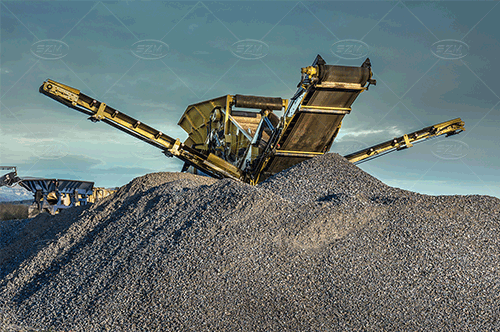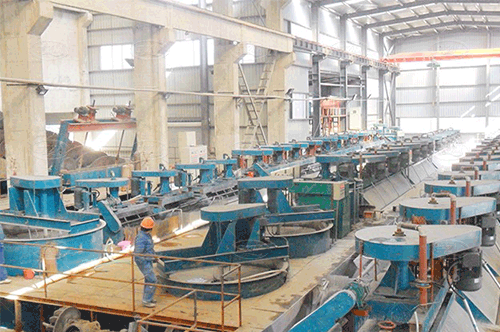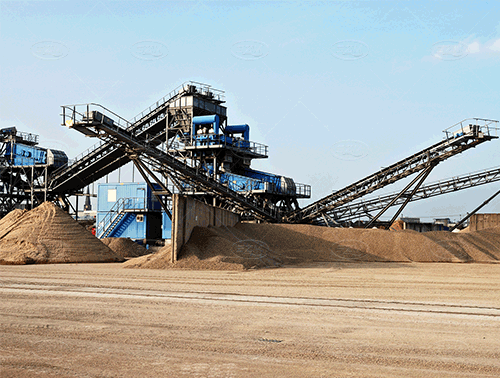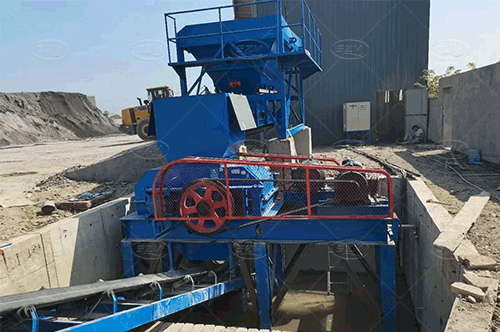Hydrocyclone






Hydrocyclone
Capacity:10-524(m³/h)
Graded granularity:25-130(μm)
Inlet pressure:0.06-0.15(MPa)
Scope of application:It is applicable to grinding and grading operation of black, nonferrous metal and non-metallic ores, raw ore desliming operation, fine grading operation, concentrate concentration operation, tailings damming operation, tailings filling operation, tailings dry discharge operation, etc.
Features and technology advantages of Hydrocyclone
Hydrocyclone is a classification equipment that uses centrifugal force to accelerate the sedimentation of ore particles. It needs pressure to feed ore, so it consumes a lot of power, but it covers a small area, is cheap, has a large processing capacity, and has high classification efficiency. It can obtain very fine overflow products, which are mostly used for classification equipment in the second stage closed-circuit grinding. It is a device for separating and removing heavy coarse particles such as mud and sand in sewage. Sometimes it is also used for mud dewatering. There are two types of pressure type and gravity type, which are usually made of circular column structures or metal pipes. Water enters from the upper part of the structure (or metal pipe) along the tangent line by pressure or gravity. Under the action of centrifugal force, the coarse and heavy particles are thrown to the wall of the device and rotated downward and discharged together with the formed thick liquid. The smaller particles are discharged with the secondary up-swirl vortex after being rotated to a certain extent.

Feature of Hydrocyclone
1. The feed inlet adopts the involute direction to feed the material, which increases the centrifugal force of the material, improves the grading effect and greatly reduces the wear of the feed box.
2. The involute method can reduce the turbulence caused by sudden divergence when the material enters the hydrocyclone, and the slurry runs smoothly in the hydrocyclone, thus improving the separation performance of the hydrocyclone and reducing the impact wear of the material on the feed box.
3. The length ratio of the column cone section of the hydrocyclone and the insertion depth of the overflow pipe are reasonable, and the classification efficiency is higher.
4. With wear-resistant rubber lining, the service life can be extended by 2-4 times.
5. The structure design is reasonable, the grading index is high, and the index fluctuation is small.
Working principle of Hydrocyclone
When the two-phase (or three-phase) mixture to be separated enters the hydrocyclone at a certain pressure from the feed inlet of the hydrocyclone, a strong three-dimensional elliptical strong rotational shear turbulent motion is generated. Due to the different density of particles, the centrifugal force, centripetal buoyancy, fluid drag and other forces they are subjected to are different. Under the effect of centrifugal sedimentation, most of the coarse particles (or heavy phase) are discharged through the underflow port of the hydrocyclone, while most of the fine particles (or light phase) are discharged through the overflow pipe, thus achieving the purpose of separation and classification. Xinhai hydrocyclone has a unique structural design and adopts a multi-stage cylinder composite structure. The height of the cylinder can be increased or decreased as required. If the height is increased, the overflow fineness can be increased by up to 10 μ About m; And each diameter has a unique combination of cylinder length and cone angle, which can achieve the maximum tangential speed under the minimum total cyclone length, thus increasing the centrifugal force of materials and improving the classification efficiency.


Product Data
Technical Data of Hydrocyclone:
Model
Specifications
Capacity(m3/h)
Graded granularity(μm)
Diameter of overflow port (mm)
Diameter of sand trap (mm)
Inlet pressure (MPa)
XC II F 150
150
10 ~23
25 ~74
30 ~50
8~22
0.06 ~0.15
XC II F 200
200
17 ~38
28 ~80
40 ~65
16 ~32
XC II F 250
250
24 ~53
30 ~82
65~100
16 ~40
XC II F 300
300
40~100
36 ~90
65~120
20 ~40
XC II F 350
350
56~118
40~100
80~120
30 ~70
XC II F 375
375
74~157
42~105
90~135
30 ~70
XC II F 450
450
90~192
44~110
100~150
30 ~70
XC II F 500
500
128~300
50~115
130~220
35~100
XC II F 550
550
155~368
52~120
140~240
35~100
XC II F 600
600
200~468
57~125
160~260
65~110
XC II F 660
660
237~524
60~130
180~280
80~150









